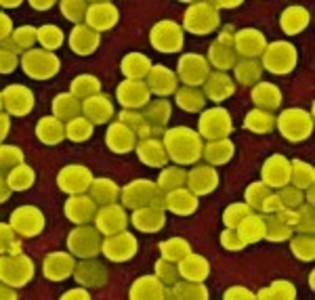If you’ve been on the internet at all over the last several weeks, you’ve likely come across these pictures- the white rats with grotesquely large mammary tumors warning of the dangers of GMO foods. A controversial and not yet even officially published study out of France on the Long term toxicity of Roundup herbicide and a Roundup-tolerant genetically modified maize is responsible.
In this 2 year study (compared to the 90-120 days for most previous protocols) researchers purportedly demonstrated the ill-effects of glyphosate (active ingredient in Roundup herbicide) and its adjuvants (putatively inactive ingredients that enhance the absorption, distribution or metabolism of the active ingredient), but also inadvertently, and despite the rampant criticism of the study, may have identified a mechanism of action for the growth of these tumors; a disruption of the estrogen pathway perhaps linked to primary kidney and liver damage. Moreover, and again perhaps inadvertently, the research points to a possible player in the development of fibroid type tumors.
How GMO Research is Conducted
There is great debate over the safety of herbicide rendered or engineered, genetically modified organisms (GMO) within the food and water supply. Studies on the side of industry, suggest no major ill-effects, while those on the side of environmentalist indicate differently. Research design likely contributes to the disparate findings. Much research to date has been short-term (90-120 days) and/or has limited the analysis to testing or manipulating only the active ingredient in the herbicide (glyphosate) and not the variety adjuvants found in the total herbicide formulation and that would be dispersed into the natural environment (food, water) post herbicide use.
The current study sought to remedy some of those short-comings and approximate what humans might be exposed to with current regulatory standards in place and in an ‘natural environment’ where exposure rates and types would necessarily vary. (Whether lab rats can approximate human physiology or the lab can be considered a ‘natural environment’ are debates for another day).
The Seralini GMO Study
Using healthy male and female Sprague-Dawley rats, the researchers evaluated the long-term (two years), across a life-span effects, of eating Roundup treated foods (maize) and water with Roundup residue at levels below the currently parts per billion standard and consistent with what humans might be exposed to in the current environment. Control rats were fed non-GMO diets and the test rats were fed varying levels of GM maize (11%, 22% and 33% of the total diet) and water with Roundup – well below the approved levels found in the environment.
Tumors, Toxicity, Death and the GM Diet
Compared to control rats fed a non-GM diet, those fed the GM-maize and Roundup water, died five times sooner and developed huge tumors, often greater than 25% of their body weight and requiring euthanasia to reduce suffering. There were distinct differences between the male and female treated animals. The females died more quickly and developed primarily mammary tumors, followed by a lower percentage of pituitary tumors and kidney and liver toxicity. While the males, demonstrated more severe kidney and liver disease along with skin tumors. The females were more susceptible to the Roundup in the water and both groups were equally susceptible to both the lower and higher percentage (11% and 33%) exposure to GM food, suggesting a threshold effect for disease initiation rather than a cumulative or additive effect.
Endocrine Disruption
The endocrine effects were also telling and pointed to sex-dependent differences in the tumor and disease expression. The ratio of testosterone to estradiol was disrupted in both males and females. Males in the highest Roundup treatment group (33% of total feed maize), demonstrated double the levels of circulating estradiol (see Evolution or Extinction of Men for details on male endocrine disruption) when compared to the control group. Whereas the exposed females showed increased testosterone levels.
Potential Fibroid Connection
The explosive growth of tumors in the female treated rats is notable both because of the large size and location of the tumors (mammary and pituitary) but more so perhaps because of the nature and physiology of the tumors themselves. In all but two cases, the tumors were non-cancerous, non-infective or non-metastatic. The tumors were benign adenomas and fibroadenomas, those commonly found in human women as they age (also common in this strain of lab rat as it ages). Fibroadenomas are comprised of fibrous and glandular tissue located in the breast. Fibroids are similar in tissue composition, but are found in the uterus. In the present study, fibroadenomas were found in the mammary tissue and adenomas in the pituitary gland. There was no mention of uterine fibroids or adenomas in other female reproductive regions. Similarly, although, the authors make no such claim regarding the expression of fibroid type tumors, relative to hormone changes and concurrent liver dysfunction (where the enzymes and proteins involved in the hormone regulation reside), I surmise that perhaps there is a connection there as well. It is conceivable that the combined insult of aging and environmental toxins on liver function alters hormone pathways sufficiently to promote this type of tumor growth.
Controversy and Criticism
As this study was released both pro- and anti-GMO factions got their pants in a bunch. On the anti-GMO side, this study represented proof-positive that GMO foods were bad. The results of this study, and in particular, the pictures of the tumor-ridden rats went viral on the internet. On the pro-GMO side, the criticism was as swift as it was vitriolic, with claims ranging from poor methodology, to outright scientific fraud. I suspect the truth lay somewhere in between.
My Take
Releasing to press first. This merited all sorts of criticism, most of which has no bearing on the actual study but does suggest a less than forthright approach to media relations. However, given the politics surrounding this topic, one can understand this PR approach.
Sprague-Dawley rats are prone to tumors. Yes, they are and as they age, tumors become more frequent. But here we have a little pot and kettle action going on. Sprague-Dawley and other outbred strains of rats and mice, all have predilections for certain diseases and tumors, but are nevertheless what is used in all industry supported (even the studies supporting the safety of GMO) and academic research. The choice of lab rat/mice is important, but even within specific strains there is huge variability. Nullifying the study because the researchers used the same strain of lab rats that other researchers also use, is a weak criticism at best and more than a little disingenuous. Perhaps a better criticism would be the use of lab rats in general to extrapolate human physiology.
Sprague-Dawley rats are prone to tumors as they age. Well guys, so are women. By the time a woman reaches age 50, upwards of 70% of women have fibroid type tumors. And frankly, aging, whether in animals or humans, increases disease expression. Our bodies just don’t work as well when we are older. Simply measuring the effects of a toxin for a short period of time in youthful animals does not, in any way, mirror the real life of the animal or a human, where effects are cumulative over time and sometimes even multiplicative and synergistic.
The study was too long and the control rats were dying too. Life is longer than adolescence. If one wants to evaluate how a treatment or toxin affects an organism over time and as it ages, one has to evaluate across that life span. This study compared tumor progression, disease and death rates between the non-GM controls and the GM fed groups, across the rodent’s life span, which is about 2+/- years. As the rodents aged, both groups developed tumors and some died, but there were more tumors and earlier deaths in the experimental group.
Failure to observe or measure is not synonymous with non-existence. Neglecting to measure a particular toxin or analyte, a specific symptom or disease process, or failing to evaluate long term effects does not mean that the toxin, analyte, symptom or disease process in question did not happen or does not exist. It simply means that you chose not to measure it. So claiming that a 3-month study in youthful rodents nullifies results from a longer study, regardless of any other methodological issues with either study, is an utterly false, and more than a little dishonest argument.
The dose response-curve was not linear. Damn it, how dare our complex physiology not conform to the simplicity of linear statistics. A common dose-response reaction is highly linear, where a small dose elicits a similarly small response and a larger dose increase the response size. This is not case when dealing with endocrine disruptors. Hormone systems are complex and highly non-linear. Hormone reactions occur at extremely low doses and often interact synergistically with other factors and respond differently over time and with cumulative exposures. This was the case in the current study.
In spite of the flaws with this study and contrary to the criticism, the Seralini study represents one of the only, if not the only, long term evaluation of the effects of Roundup and GM feeding on health. Long term studies, even in rodents, are not common place. They should be.
The next long term study (and there should be many more) should include different strains of rodent, measure additional hormones and steroidogenic proteins altered with liver disease and if they want to be really ingenious, look at the estrogen, androgen and progesterone receptor densities in the tumors.
We Need Your Help
More people than ever are reading Hormones Matter, a testament to the need for independent voices in health and medicine. We are not funded and accept limited advertising. Unlike many health sites, we don’t force you to purchase a subscription. We believe health information should be open to all. If you read Hormones Matter, like it, please help support it. Contribute now.













When working in Libya, over several trips and many years, I became very familiar with the “Libyan Guarantee”… You have never heard of this??… Probably not. But the Libyan Guarantee is the finest Guarantee that one can have!
A Libyan Guarantee states an item or thing is Unconditionally and Absolutely 100% safe, good and fit for the purpose sold… until it busts…Then you know absolutely where you can shove that guarantee…..
Lawyers call this a “Suppository Warranty”, I am told.
So we all know that Monsanto’s DDT should not have been banned by the WHO, as the Advertisements with children singing long ago proclaimed …. DDT is good for Meee!! When do we get our beloved DDT back again, to be sprayed over your garden by helicopters when you are there or at work, or against your wishes??
It is absolutely safe, as Monsanto stated… Or maybe..NOT!.
A hunter used a special type of Roundup with a short “half life” of only 10 days designed for poison ivy on our land (they have a hunting lease). He says they’ve been using it for several years, and that it is no big deal because it doesn’t persist. I have had a fibroid for a number of years that I have been trying to fight.
While I am sure I had the fibroid before they started using our land, I was wondering whether this could have been frustrating my efforts to fight it (it is very inaccessible, so I don’t go up there as often as I’d like, but I had always thought of it as a safe place). Could you explain these issues so that I know whether/when it is safe for me to go there anymore.
Well, a half life of only 10 days means that only half of the chemical is cleared in 10 days, 10 more days half again and so on. If he sprays regularly, the chemical residue will be remain for a long time. Often it seeps into the water, nearby streams. Regarding the fibroids, it’s difficult to know if the chemicals in many of these sprays are linked to those types of growths- it was merely conjecture on my part. I think it’s a good possibility but there have been no long term studies, except perhaps this one. Extrapolating from animals to humans is difficult at best. It’s definitely an area that requires further research though. Perhaps someday, if we keep shining the light on these issues, we’ll generate sufficient interest to drive/fund that type of research.